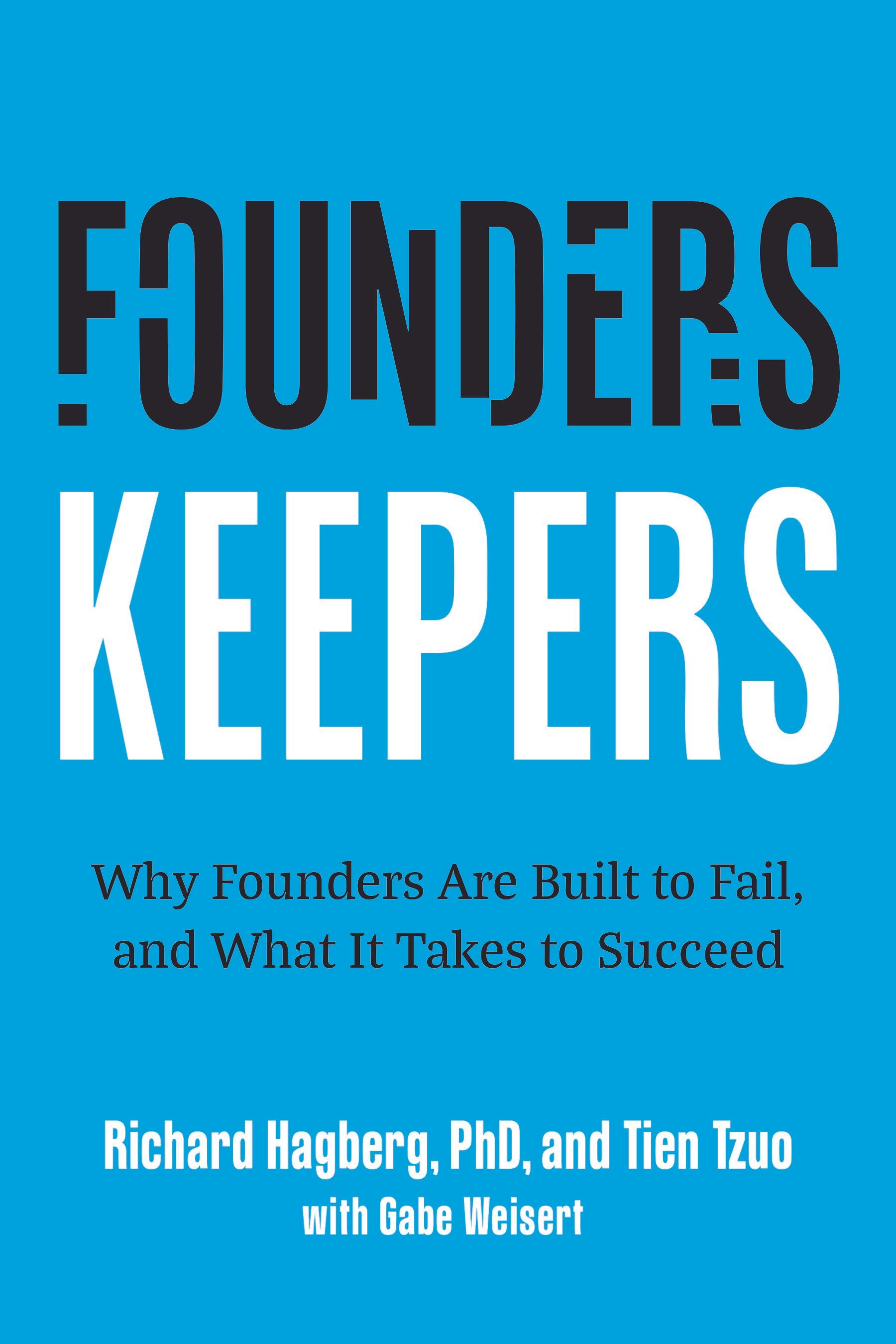Article
The 10 Things Stakeholders Want Founders to Change

Being a founder is tough, and if you’re reading this, you know it. You’ve got vision, drive, and creativity. These are your natural strengths and the reasons you started this journey. But where do you need to grow to avoid hitting the wall like most founders do in the long run? Your direct reports, investors, advisors and key employees know the answer.
Our data from 122 founders based on feedback from their teams, reveals a hard truth: You need to change. Based on coworker and investor ratings of the importance of 46 different competencies, this blog examines their priorities, the gaps between what they want and what you are doing. These aren’t just skills that would be nice for you to have. These are the areas where your key stakeholders are feeling frustrated, where they see you dropping the ball. When you fail to improve in these critical areas, you’re not just holding yourself back—you’re hurting your company. The people you work with are counting on you to step up, and when you don’t, it’s creating friction, delays, and missed opportunities.
1. Disciplined Decision-Making: Better Judgment and Overcoming Bias
Founders often thrive in fast-paced environments, but when decisions are made hastily, they risk being driven by bias rather than sound judgment. Whether it’s hiring the wrong person or choosing the wrong strategic direction, poor decisions can derail your company’s growth. Or, founders decide too quickly and impulsively and then must remake their original decision, leading to accusations of waffling. Direct reports get frustrated with reactive decisions and inconsistency, feeling confused about priorities. Investors get anxious when they see indecisiveness or impulsive decisions wasting resources. Effective decision-making requires discipline, not just instinct. Founders need to recognize their cognitive biases and tendency to be reactive and take deliberate steps to gather data, seek diverse input, and weigh all options before committing to critical decisions.
How to develop it:
- Learn the difference between intuition and impulse: Founders often act on a hunch, mistaking impulse for valuable insight. Recognize that while intuition can guide you, it should be one data point among many. Treat your instincts as signals to investigate further rather than definitive answers.
- Define the problem clearly: Before jumping to a solution, spend time carefully defining the problem. Often what seems like a symptom is indicative of a larger issue that requires deeper analysis.
- Create a decision framework: Categorize decisions into high-impact ones that need careful analysis and low-impact ones that can be made quickly. For critical decisions, gather data and consult others. For smaller ones, act swiftly. This balances thoughtful decision-making with maintaining momentum.
- Build a “star chamber” of advisors: Surround yourself with experienced voices who challenge your thinking before you make a fatal leap. Ask disconfirming questions to challenge assumptions and avoid bias: Instead of seeking validation, ask your team, “What am I missing?” or “Why might this idea fail?” These questions surface concerns, generate alternative solutions, and encourage open dialogue. This approach reduces bias and fosters a culture where diverse perspectives improve decision-making.
2. Strategic Implementation: Vision Means Nothing Without Execution
You’ve got big ideas, but without a clear, strategic plan, those ideas remain daydreams. Too often, founders confuse activity with progress, mistaking endless pivots for growth. Your team needs to know where the company is going, and you need the discipline to execute. They get discouraged when they see you spinning your wheels with little tangible progress in turning your grand vision into a concrete plan. Investors expect execution and get frustrated when you focus too much time on pig-picture thinking without a clear path to implementation
How to develop it:
- Turn Vision into Actionable Steps: Break down your long-term vision into smaller, actionable milestones. Create clear, measurable goals for your team so that the grand vision is not just a distant ideal but a series of achievable steps.
- Delegate Decision-Making Authority: Empower your teams to make decisions on execution. Founders often struggle with letting go, but successful implementation requires trusting your team with ownership over how goals are executed.
- Institute Regular Review Cycles: Schedule frequent check-ins and progress reviews. These are not just for status updates but for course correction. Review data, analyze outcomes, and adjust strategies as needed to ensure that execution stays aligned with the broader vision.
- Communicate the Why Behind the What: When assigning tasks, always explain how each piece of execution ties back to the bigger picture. Connecting the team's efforts to the company's overall vision keeps everyone motivated and aligned on priorities.
3. Focus and Prioritization: Don’t Drown in Distraction:
Most founders try to do too much and end up spinning their wheels. The result? Burnout, team frustration, and a company that’s stuck in neutral. If you’re not laser-focused on the right things, your startup is doomed to drift. You can overwhelm your team with too many initiatives leading to burnout and lack of focus. Investors lose confidence when you jump from idea to idea without delivering the results that matter the most.
How to develop it:
- Learn to say no: Founders often get excited about every opportunity, but you need to say no to distractions that don’t align with your core priorities. This discipline is key to maintaining focus and driving meaningful progress.
- Stop prioritizing quantity over quality: Avoid the trap of busy work. Ensure that your time and energy are directed toward high-impact activities that genuinely move the company forward.
- Set ruthless priorities: Start each day by asking, “What’s the highest-impact thing I can do today?” Focus on one bottleneck at a time.
- Delegate non-critical tasks: You can’t do it all, and you shouldn’t try. Hire experts for areas outside your zone of genius.
4. Finding and Attracting Talent: The Right People Make the Difference.
You can’t scale without the right team, but many founders struggle to find, attract, and retain top talent. Hiring the wrong people—or worse, keeping the wrong people—can cripple your company’s ability to grow. Poor hiring decisions or a failure to let go of ineffective team members can create a dysfunctional environment and drag the team down. If key roles remain unfilled or the wrong people are in critical positions, investors will lose faith in your ability to scale the business.
How to develop it:
- Use a disciplined hiring process: Create a structured approach to interviewing and hiring. Include input from multiple team members, ensuring the final decision is based on facts, not just gut feelings.
- Hire for the team, not just the position: Consider how each new hire will fit within the broader team dynamic, ensuring a cultural and functional match that supports long-term growth.
- Be strategic about hiring: Focus on the roles that will have the biggest impact on your company’s next stage of growth.
- Invest in leadership development: Top talent wants to grow. Create opportunities for development within your organization, or they’ll leave.
5. Building Strong Teams: The Founder Doesn’t Scale, But Teams Do
In the early days, it’s easy to rely on a scrappy, all-hands-on-deck mentality. But as your company grows, that approach doesn’t work anymore. Teams need structure, defined roles, and accountability to scale. A lack of structure and clear roles leads to confusion and inefficiency, leaving employees feeling unsupported and unclear about expectations. Investors worry that if you can’t build a cohesive team, the company will stagnate.
How to develop it:
- Promote psychological safety: Encourage open dialogue within your team by creating an environment where people feel safe to share ideas without fear of retribution. This fosters creativity and problem-solving.
- Clarify roles and responsibilities: As your startup scales, clearly define everyone’s role to avoid confusion and ensure that everyone knows what they are accountable for.
- Foster a culture of collaboration: Your job is to align the team and ensure they work toward the same goals. Communicate openly and frequently.
- Encourage Diverse Perspectives: Make diversity of thought and background a key component of your team-building strategy. Diverse teams tend to be more innovative and can tackle challenges from multiple angles, leading to better problem-solving and creativity.
- Create Clear Feedback Loops: Establish a culture of continuous feedback, where team members feel comfortable providing and receiving constructive criticism. Clear feedback ensures that performance issues are addressed early, and improvements are made continuously.
6. Delegation and Empowerment: Let Go to Grow
Founders often struggle with delegation, feeling that nobody can do the job as well as they can. But this mentality only limits growth. To scale, you must empower your team to take ownership. Your employees will get frustrated with micromanagement and your failure to trust their abilities. This can cause you to become a bottleneck in decision-making. Investors will see your refusal to delegate as a sign that the company is too dependent on your decisions, limiting its scalability.
How to develop it:
- Push decision-making down: Empower your team by delegating decisions to those who are closest to the issue. Trust that your team can make better, faster decisions when given the authority.
- Practice devolution: Encourage your team to take ownership of key tasks, allowing them to grow into leaders while freeing you up to focus on strategy.
- Delegate with trust, not oversight: Empower your leaders by giving them the freedom to make decisions.
- Set clear expectations: Ensure your team knows what success looks like, then get out of their way.
7. Accountability: Don’t Just Talk, Measure
Accountability is a dirty word for many founders, but it’s what separates the dreamers from the doers. Without accountability, projects stall, and growth falters. Your team needs to know that you’ll hold them to their commitments—and that you expect the same in return. A lack of accountability can result in complacency where people are not held to high standards. Teams get frustrated if you don’t hold people responsible for missed deadlines or poor performance. If investors feel that you are not addressing underperformance, they may begin to doubt that you can maintain operational discipline and deliver on promises.
How to develop it:
- Create a culture of accountability: Use metrics and milestones to track progress. Hold regular reviews to discuss what’s working and what isn’t.
- Model accountability: As the founder, lead by example. If you want your team to deliver, make sure you’re following through on your own promises.
- Create a team operating system: Implement a disciplined process to ensure that your team is held to high standards of excellence. Use objective data and milestones to track progress.
- Publicly recognize achievements, privately address failures: A culture of accountability flourishes when success is celebrated, and mistakes are handled in a supportive, private manner.
8. Coaching: Help People Be Successful
Founders often avoid difficult conversations, whether it’s giving tough feedback or resolving team conflicts. But dodging these issues only creates more problems down the line. To build a thriving company, you need to get comfortable with being uncomfortable. Employees will feel unsupported when you avoid giving feedback. Without clear guidance, team members are left to flounder, which negatively impacts morale and performance. Investors may see your avoidance of having tough conversations as a lack of the leadership skills needed to drive a high-performing team.
How to develop it:
- Have tough conversations: Use frameworks like Radical Candor to give direct but empathetic feedback.
- Encourage open dialogue: Create an environment where your team feels safe bringing up issues before they snowball into larger problems.
- Practice active listening: Show that you value your team’s perspectives by actively listening and considering their ideas before making decisions. This not only improves trust but also fosters a culture of collaboration.
- Invest in development: People want to grow but they need to know where and how. Don’t just throw them in the deep end and expect them to swim. If you don’t feel qualified to coach them, then get outside help.
9. Systems and Processes: Your Creativity Needs Structure
Startups thrive on flexibility, but scaling requires discipline. Without systems and processes in place, chaos will eventually ensue, and your growth will stagnate. A chaotic or inefficient work environment frustrates employees, as they constantly face obstacles that slow them down. Investors worry when companies grow without proper systems in place, and see it as signaling the operational inefficiency that can stifle growth.
How to develop it:
- Don’t wait for things to break: Proactively address inefficiency and mistakes.
- Document processes early: Standardize repetitive tasks so your team can focus on what matters most.
- Adopt agile methods: Implement frameworks like OKRs (Objectives and Key Results) to keep your company adaptive but focused, ensuring that systems scale as your company grows.
- Regularly review and iterate: Your systems must evolve as your company grows. Continuously assess and refine your processes to ensure they remain effective and efficient.
10. Conflict Resolution: Avoiding Conflict Is a Leadership Failure
Founders often sidestep conflict, but unresolved tension drags down performance. Healthy teams have hard conversations, and great leaders create environments where those conversations happen constructively. Unresolved conflicts drag down performance and morale. Employees get frustrated when they see you not addressing tensions and let festering issues damage team dynamics. Investors worry that unresolved conflicts within the leadership team or with key employees could lead to bigger problems, such as leadership turnover or productivity losses.
How to develop it:
- Address conflicts early and openly: Avoiding tough conversations allows small issues to grow into bigger problems. Founders often sidestep conflicts due to discomfort or time constraints, but this avoidance can harm team dynamics. Address issues with empathy and a focus on solutions, ensuring problems don’t escalate.
- Regulate emotional reactions: Emotional outbursts can fuel conflict rather than resolve it. Founders often react with frustration or impatience, which only intensifies tensions. Practice emotional control during disagreements, giving yourself space to process and focus on finding solutions rather than letting emotions dictate actions.
- Train your team in conflict resolution: Equip them with tools like active listening and negotiation to handle disagreements productively.
Final Thoughts: The Hard Work That Pays Off
Being a founder means you’re always learning—often the hard way. The skills that come naturally to you won’t always be the ones you need to succeed long-term. The sooner you face these gaps, the faster you’ll grow, and the more scalable your company will become.
The choice is yours: keep struggling in the same ways or evolve into the leader your company needs to scale. Developing these skills won’t be easy, but it’s the difference between staying stuck or thriving.
Are you ready to step up?
As a founder, you possess the vision and drive that sparked your entrepreneurial journey. But to truly unlock your company’s potential, you need to address the leadership gaps that are holding you back. The good news? You don’t have to navigate this transformation alone. My leadership coaching is designed to supercharge your abilities in the critical areas where you need growth, from disciplined decision-making to effective delegation and beyond. Imagine turning your leadership challenges into strengths and your strategic plans into executable results.
If you’re ready to evolve and lead with unparalleled effectiveness, let’s work together to turn your vision into a thriving reality. Discover how my tailored coaching can help you overcome obstacles, inspire your team, and achieve lasting success. Get in touch today to learn more and take the first step toward a transformative leadership journey.
share this
Related Articles
Related Articles





